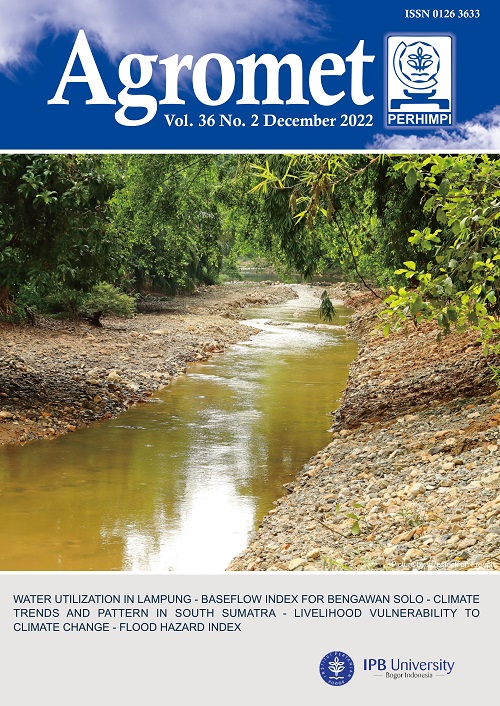Identification of Climate Trends and Patterns in South Sumatra
Abstract
South Sumatra is one of low-lying provinces in Indonesia with a vast area of peatland that is prone to peat fires and floods. Understanding climate patterns in South Sumatra is very important to anticipate the impacts of extreme weathers. This study identified the climate trends and patterns based on the daily data of temperature, rainfall and evapotranspiration obtained from 1975 to 2021 (46 years). Here, the trend and its significance were detected based on the linear regression and Mann-Kendall test approaches. Characteristics of wet/dry season (start, peak, end) were identified annually based on the 6th polynomial equation using rainfall and evapotranspiration data. The results show an increased trend of annual average temperature (0.04oC per year), rainfall (6.83 mm per year), and evapotranspiration (0.77 mm per year). Other findings reveal that the cyclic season in South Sumatra is wet season (starts from 1±30 to 163±79 Julian day), followed by dry season (from 172±152 to 273±90 Julian day), then wet season (until 244±90 Julian day). The mean excess of annual rainfall was 708 mm (593 mm and 114, respectively, for wet and dry season). Further, we found that South Sumatra experienced extreme dry season (8 times) with the longest in 2019 that lasted for 167 days in a row. As a precaution, extreme wet spells may occur in November-December, and March, whereas extreme dry seasons can be found in July-September each year.
Authors

This work is licensed under a Creative Commons Attribution-NonCommercial 4.0 International License.

